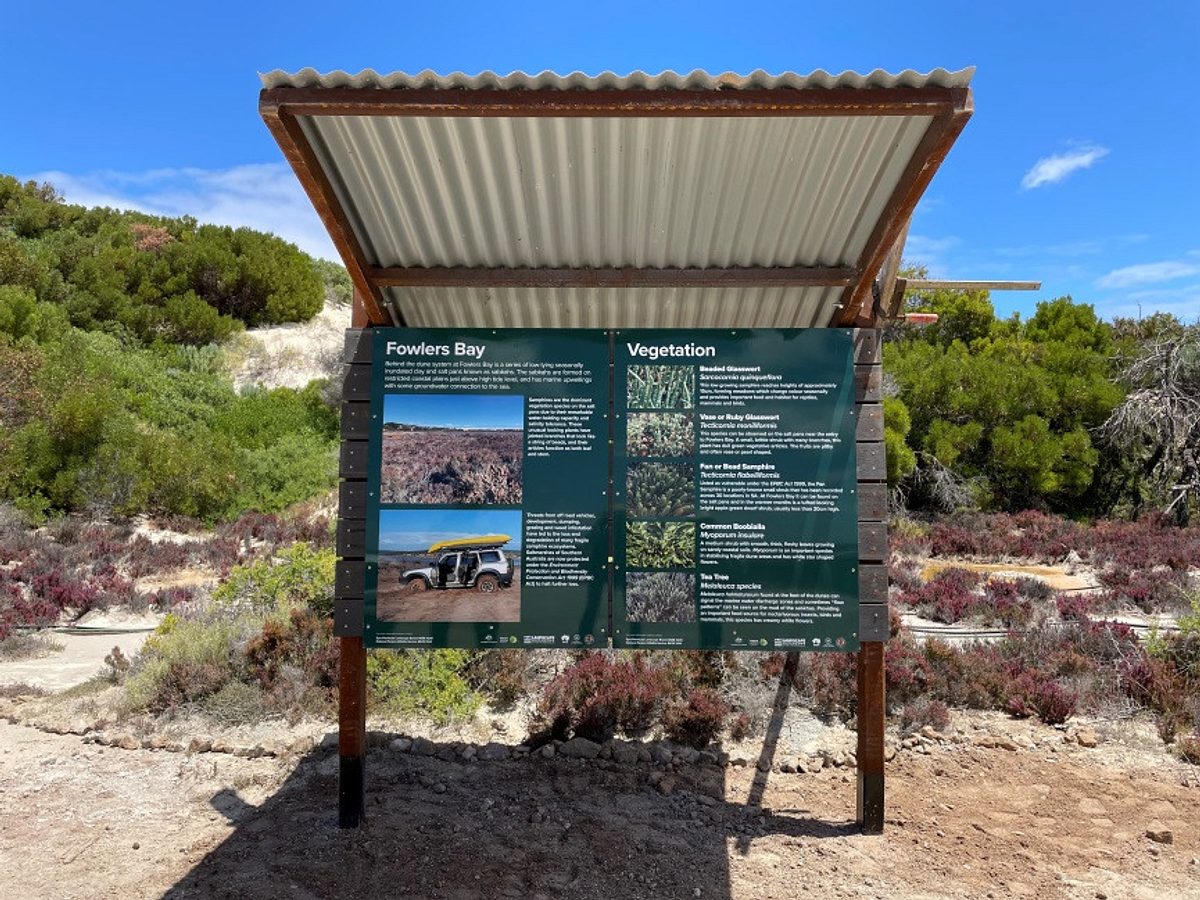STAR news 2023
Our impact on local saltmarsh
July 24
Last month our Saltmarsh Threat Abatement and Recovery project finished up along with on-ground works on more than 7,500 hectares of saltmarsh with interventions including:
- debris & weed removal
- access control
- revegetation
- rabbit control and
- hydrological improvements.
It's great to see the positive impact we've had on Eyre Peninsula saltmarsh communities, like at Whyalla where we have new samphire plants growing (pictured).
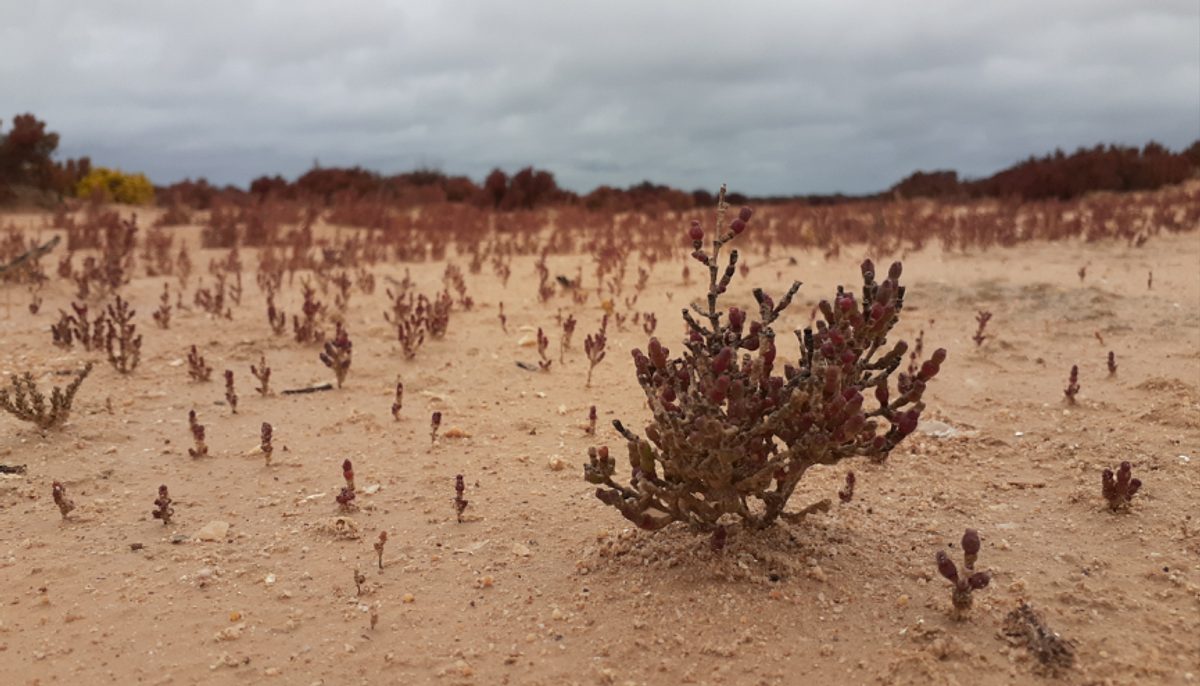
_________________________________________________________________
More visitor awareness for Cowleds Landing Sanctuary Zone
June 19
We’ve installed new saltmarsh interpretive signage at Eight Mile Creek Beach and Murrippi Beach within the Cowleds Landing Sanctuary Zone (near Whyalla), to educate visitors about the importance of temperate saltmarshes as nursery habitat for commercially important species such as Spencer Gulf King Prawns and King George Whiting.
These important wetland ecosystems are an important link between land and sea. As well as filtering run off and providing nutrients for marine food webs, they are foraging and roosting habitat for shorebirds.
The signage also aims draw attention to threats from off road vehicles which has led to the degradation of this fragile samphire ecosystem. Saltmarshes of Southern Australia are now protected under the Environment Protection and Biodiversity Conservation Act 1999 to halt further loss.
An Upper Spencer Gulf Marine Park Sanctuary Zone sign has also been installed at the turn-off to Eight Mile Creek Beach, and new Sanctuary Zone (no fishing) compliance signs at key locations within the protected area.
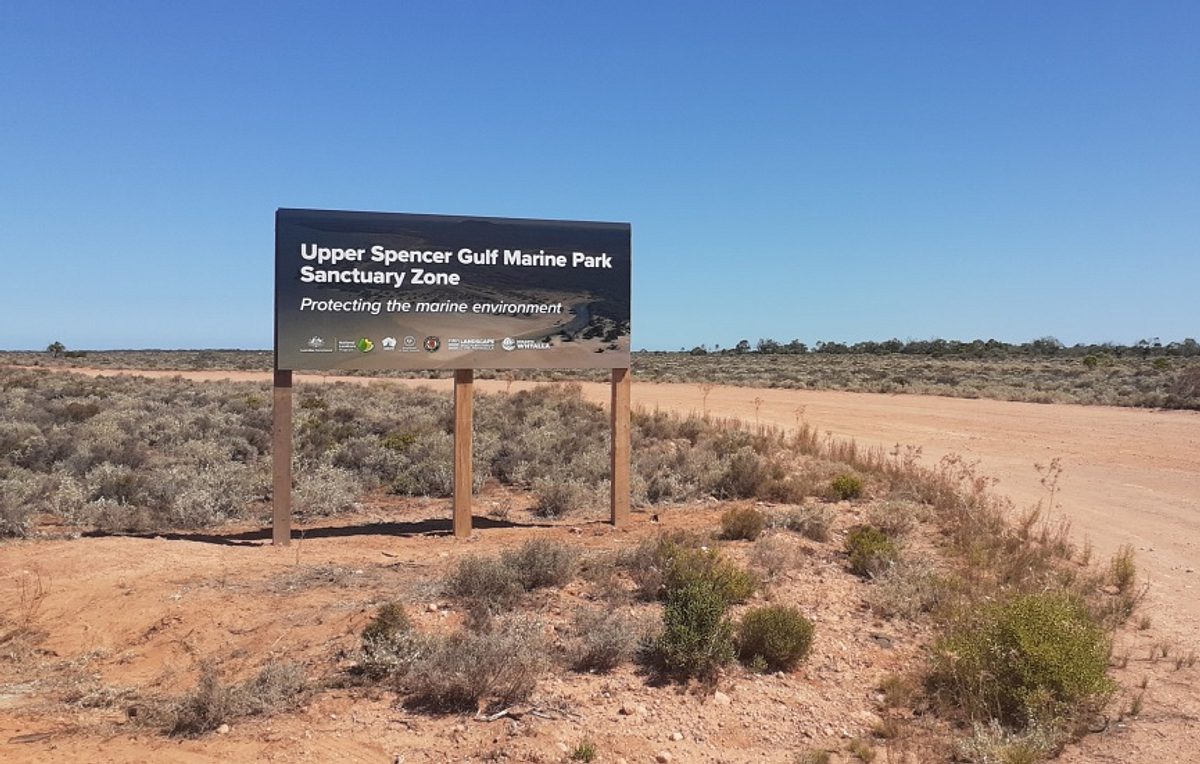
_________________________________________________________________
Whyalla students saltmarsh walk
June 13
Our landscape officers led students and staff from Fisk Street Primary School on a saltmarsh walk at Eight Mile Creek inside the Cowleds Landing Sanctuary Zone on World Environment Day last week.
Following the interactive walk, students helped to clean up rubbish from the saltmarsh and got involved in planting new saltmarsh plants to revegetate a closed vehicle track.
It was great to share with these students how saltmarsh habitats provide an important nursery area for many species such as prawns, snapper, blue swimmer crabs and whiting, as well as being a foraging and roosting habitat for shorebirds. Lots of great questions from the kids to help them better understand this important ecosystem.
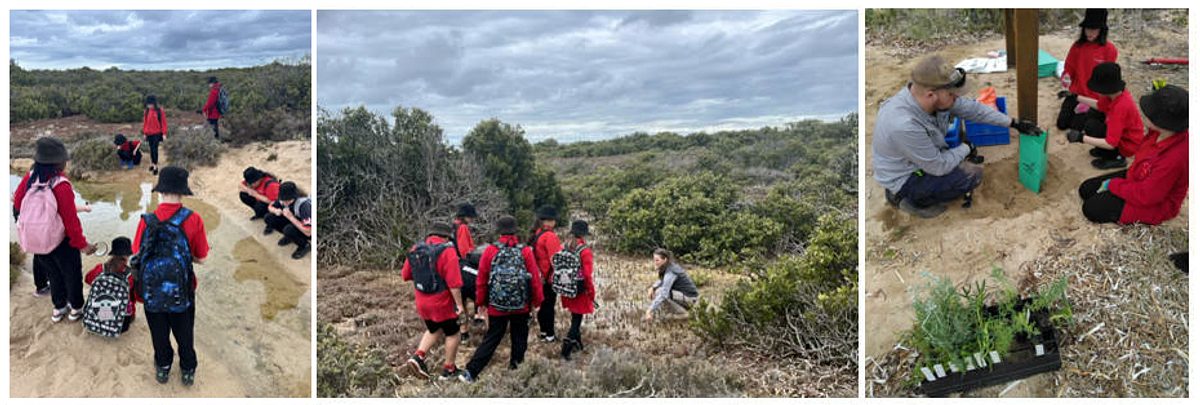
_________________________________________________________________
Boxthorn blitz to protect valuable ecosystem
June 6
More than 1300 boxthorn weeds have been controlled in the Franklin Harbor Conservation Park as part of our work on protecting valuable saltmarsh environments with rangers from National Parks and Wildlife Service SA.
The Franklin Harbor Conservation Park has a unique landscape that is home to a diversity of native flora and fauna & hosts the most valuable saltmarshes on Eyre Peninsula when it comes to blue carbon potential – organic carbon that is stored in the plants and soils of coastal ecosystems like saltmarshes, seagrasses and mangroves.
EP Landscape Board Western District Team Leader Liz McTaggart, who has managed the STAR project during the past four years, says significant progress has been made in protecting and improving the condition of Eyre Peninsula’s valuable coastal saltmarshthroughout the project.
“Working with landowners and community, we have eradicated weeds from 2605 hectares across 13 priority saltmarsh sites; revegetated or remediated 10 sites; improved hydrological flows at 3 sites; cleaned up 289 hectares of debris; and managed access across 1224 hectares at 7 sites.
“Our preliminary baseline condition reporting for the project, indicates that from the six saltmarsh baseline sites, all are in good to excellent condition with a general stable trend."
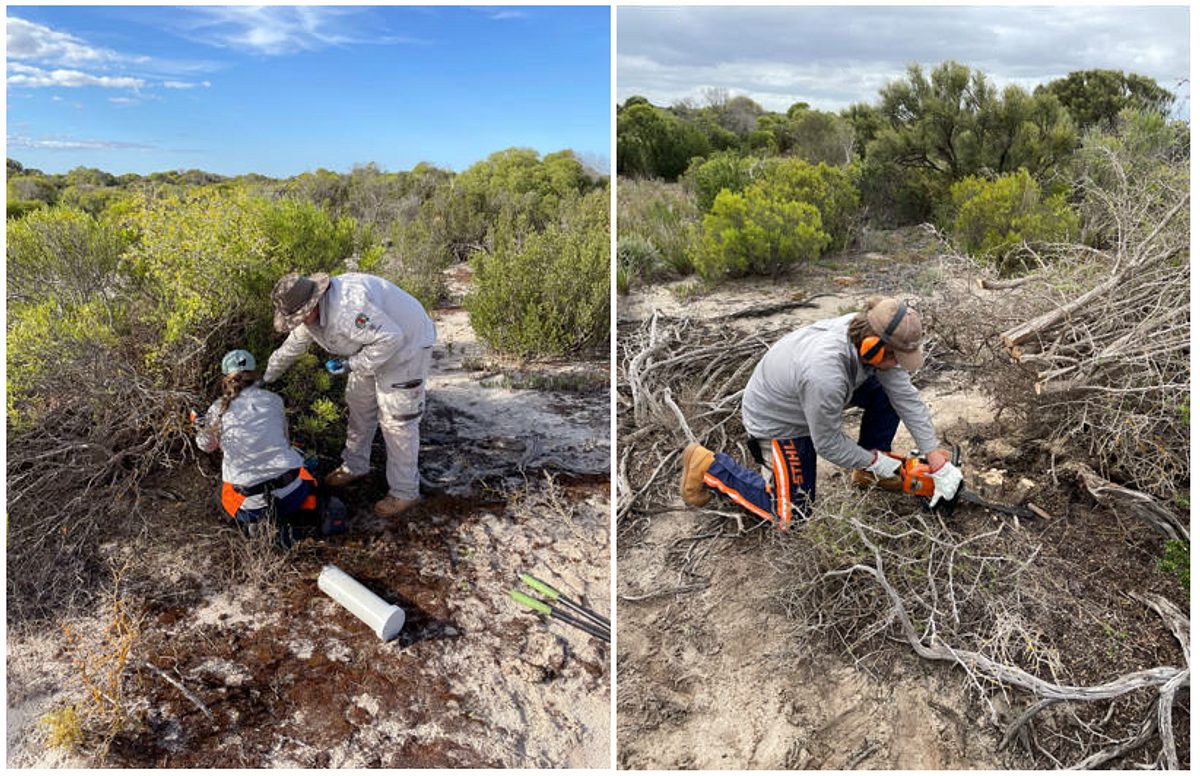
_________________________________________________________________
Adding to our EP flock
May 1
It was great to see booked out interested in our SALT Festival ‘the flock’ migratory shorebird painting workshop last week with Lower Eyre Coastcare Association. Participants were able to select one of our migratory shorebird species to paint to help grow our shorebird flock.
Species painted included the Ruddy Turnstone, Curlew Sandpiper and the critically endangered Eastern Curlew. Kids participating also had the opportunity to cut out and colour a shorebird to take home.
This flock will be available soon to migrate around the EP, to visit coastal communities to help spread the word about the plight of migratory shorebirds. Contact us if you’d like them to visit your community or school.
What’s so special about migratory shorebirds? They visit our coast during the summer months after making their way along the East Asian-Australasian Flyway from the Arctic tundra where they breed. This is a huge 25,000 km flight each year! While here, they need the time and space to feed and rest after their long journey before they leave our shore to fly back north in Autumn.
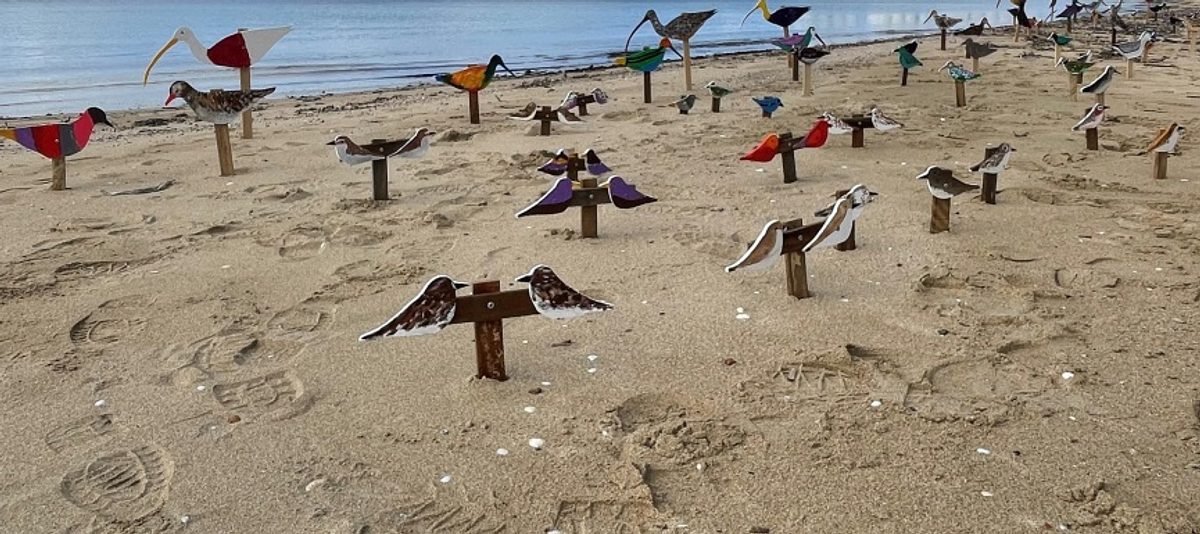
_________________________________________________________________
A helping hand for our threatened birds
April 17
Targeted interventions at 25 priority Hooded Plover nesting territories on Eyre Peninsula – from Ceduna to Cowell – has resulted in increased success for the survival of these threatened birds.
Port Lincoln based Landscape Officer, Rachael Kannussaar says that increased monitoring of the nesting territories gave the Board insights into the predators that had been hampering the success of the birds’ breeding attempts.
“Consecutive years of regular monitoring by BirdLife volunteers and Eyre Peninsula Landscape Board staff combined with the use of remote sensing cameras has certainly helped us to unravel the likely causes of nest and chick failure across different nesting locations in our region,” Ms Kannussaar says.
“While we can’t do anything about natural occurrences such as high tides, we can help with predation by foxes and feral cats; and interference by visitors and their pets."
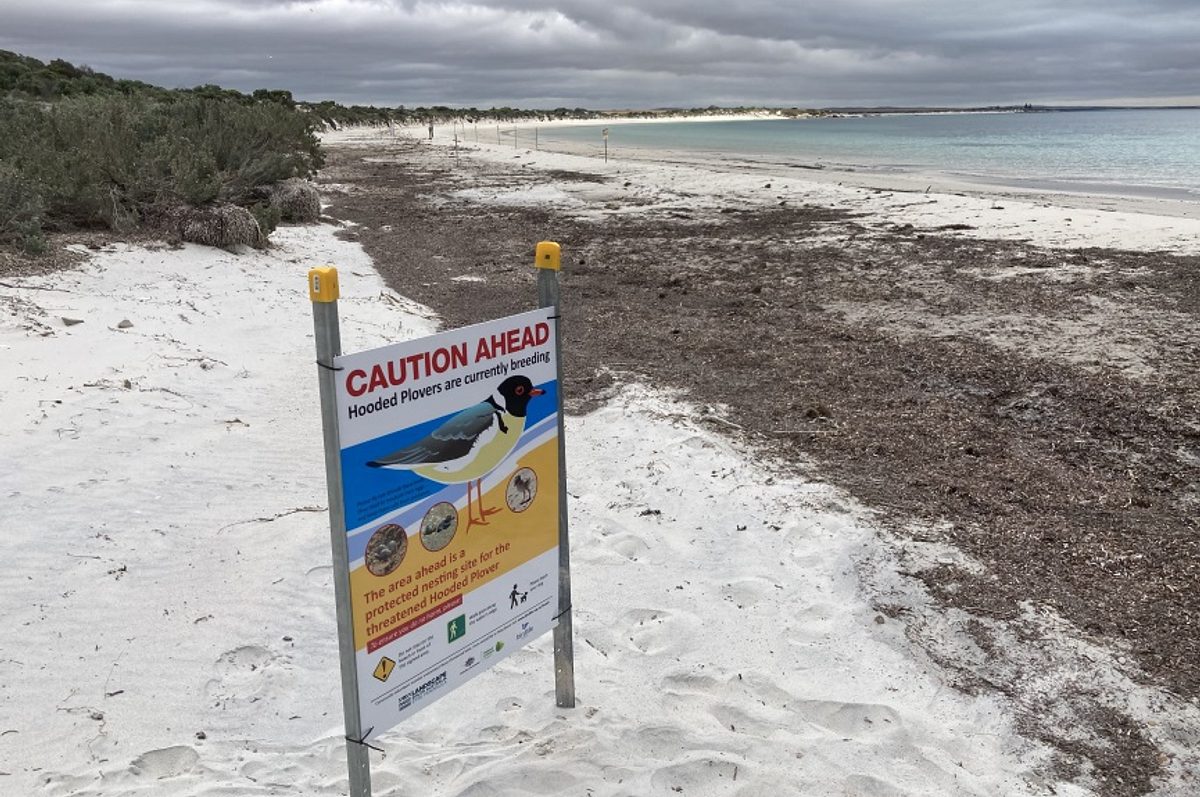
_________________________________________________________________
Shorebirds galore
March 14
Thousands of shorebirds have been counted by volunteers and Eyre Peninsula Landscape Board staff across the vast Eyre Peninsula region during February, contributing to local knowledge as well as a national program.
The survey data will feed into the BirdLife Australia National Shorebird Monitoring program which surveys key shorebird sites around Australia to increase understanding of the national shorebird population, including threats to the birds and management actions that can be put in place to mitigate the threats.
The Western Eyre Peninsula shorebird count areas alone support up to 21 of the 38 international migratory species, which travel thousands of kilometres to reach Australian shores every summer.
Thirty western EP count areas from Lake Newland to Cactus Beach were surveyed during February, with good bird numbers recorded at each site. From rocky platforms to offshore islands, marshy samphires and sandy beaches, these count areas are critical habitat for the feeding, roosting and resting of our resident and migratory shorebirds. Read more...
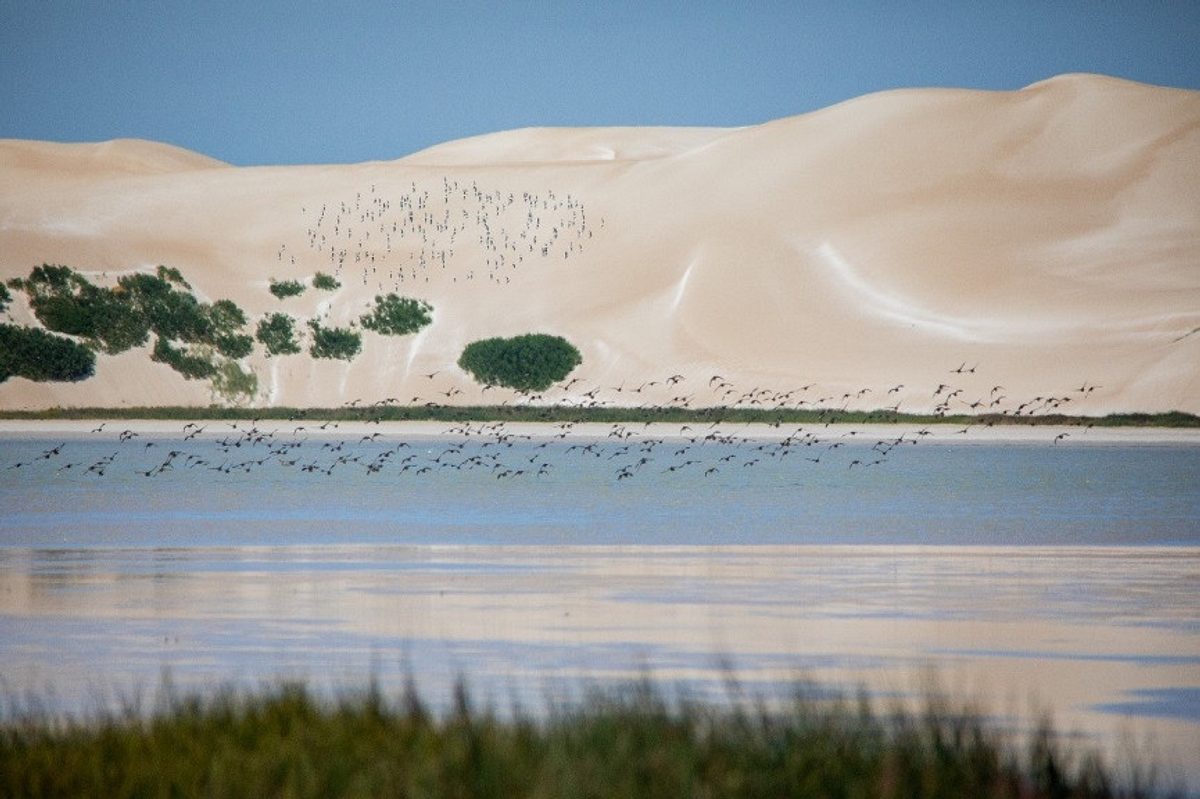
_________________________________________________________________
Thousands in Whyalla shorebird count
February 28
More than 4,000 shorebirds were counted over three-and-a-half hours during our annual Whyalla saltpans shorebird survey which takes place within an industrial area with high numbers of birds.
From the 4,000+ shorebirds counted, 25 species were recognised including a very encouraging count of 22 of the critically endangered Curlew Sandpiper (after none were recorded at the site last summer). Two shorebirds not previously recorded there were also sighted – the Marsh Sandpiper and Oriental Plover.
Overall, there were better numbers and diversity recorded compared to last summer's count. The survey has been running since 2017.
The bird data from the survey is now uploaded to the birdlife website.
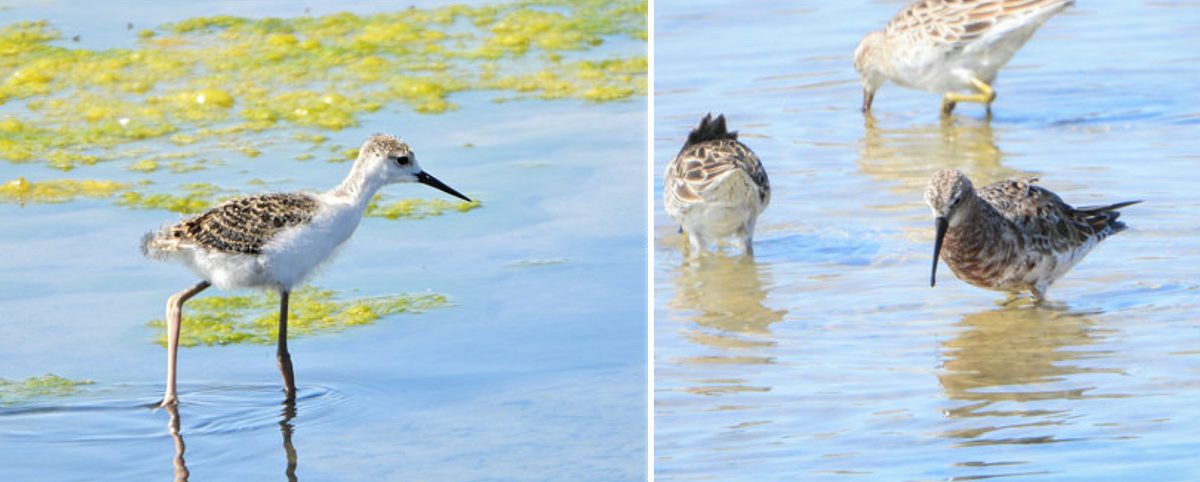
_________________________________________________________________
Visitor awareness on local beaches
February 27
This is Point Brown on the far west coast of Eyre Peninsula, between Streaky Bay and Ceduna.
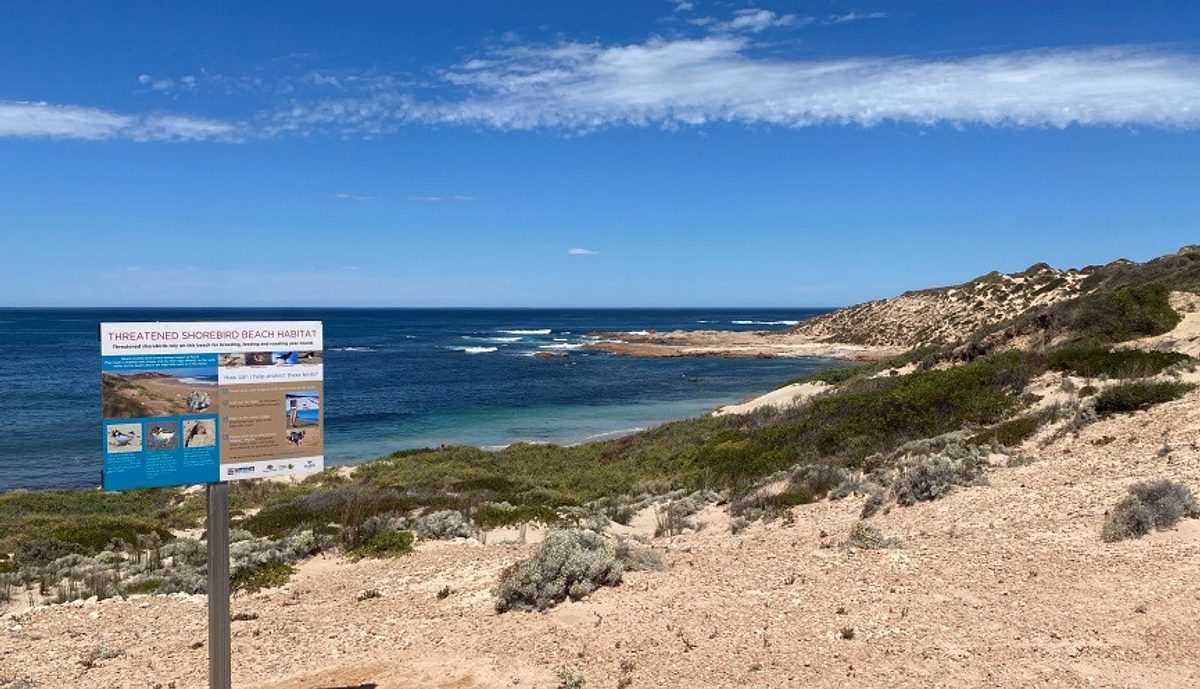
We've installed new shorebird signage here to educate the community on how to minimise their impact on beach-nesting shorebirds who use the beach as a food source and nesting habitat. Nesting season is still active, with Eyre Peninsula birds potentially nesting until mid-April.
For the birds' nesting to be successful, it's really important that they are not disturbed. Look out for signs such as these at local beaches that help to inform visitors that there are nesting birds nearby who need to be given space to help chicks survive and thrive.
_________________________________________________________________
Meet Haswell’s Shore Crab (Helograpsus haswellianus)
February 13
You’ll have to sneak up on these shy little crabs to catch a glimpse but their burrows are easy to find just above the tide mark in our saltmarshes. These little mud crabs produce swarms of zoaea (larvae) at the highest tides of the month, feeding shoals of juvenile fish and prawns that enter the marshes during highwater.
These complex saltmarsh ecosystems provide vital nursery habitat for many commercially important species, including the Western King Prawn and King George Whiting.
We’ve been learning all about saltmarsh connections through our STAR project and we’ll be sharing this knowledge with the community with interpretive signs to be installed later this year at two saltmarsh locations inside the Cowleds Landing Sanctuary Zone at Eight-Mile Creek and Murrippi Beach.
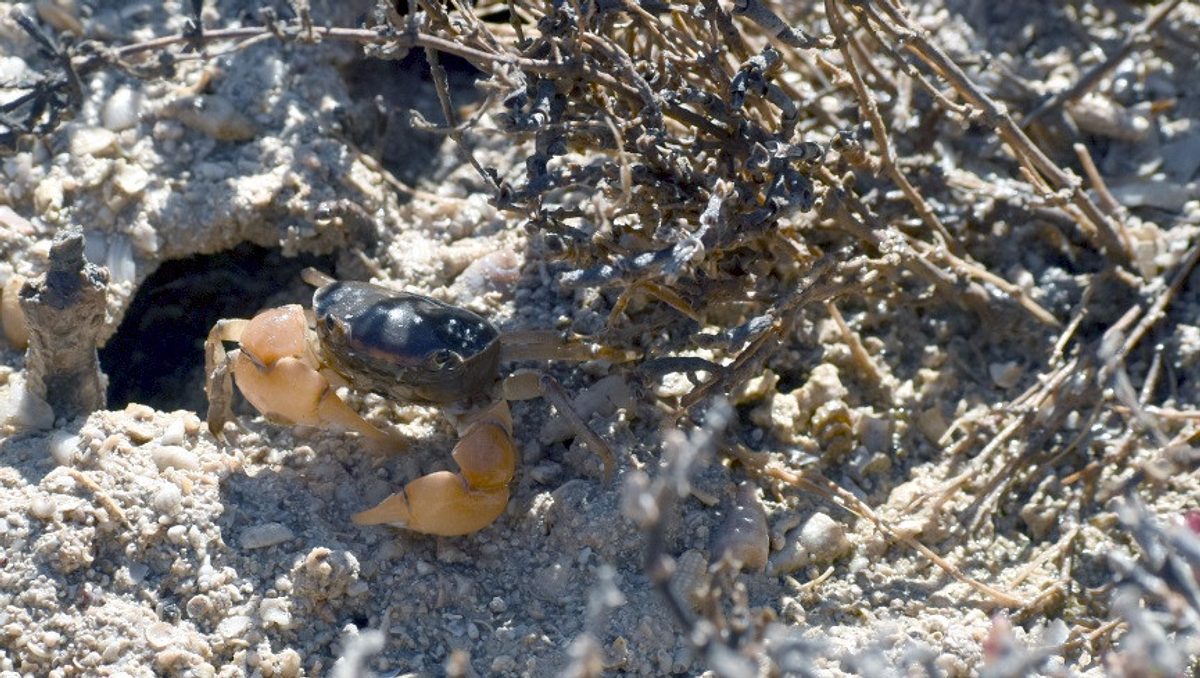
_________________________________________________________________
Clean up at Streaky Bay
February 7
We’ve had staff and volunteers work on restoring threatened samphire habitat at the Streaky Bay Spit this week with a marine debris clean-up. Whilst undertaking the work, our staff had the opportunity to liaise with local oyster growers who helped to recover washed-up oyster baskets.
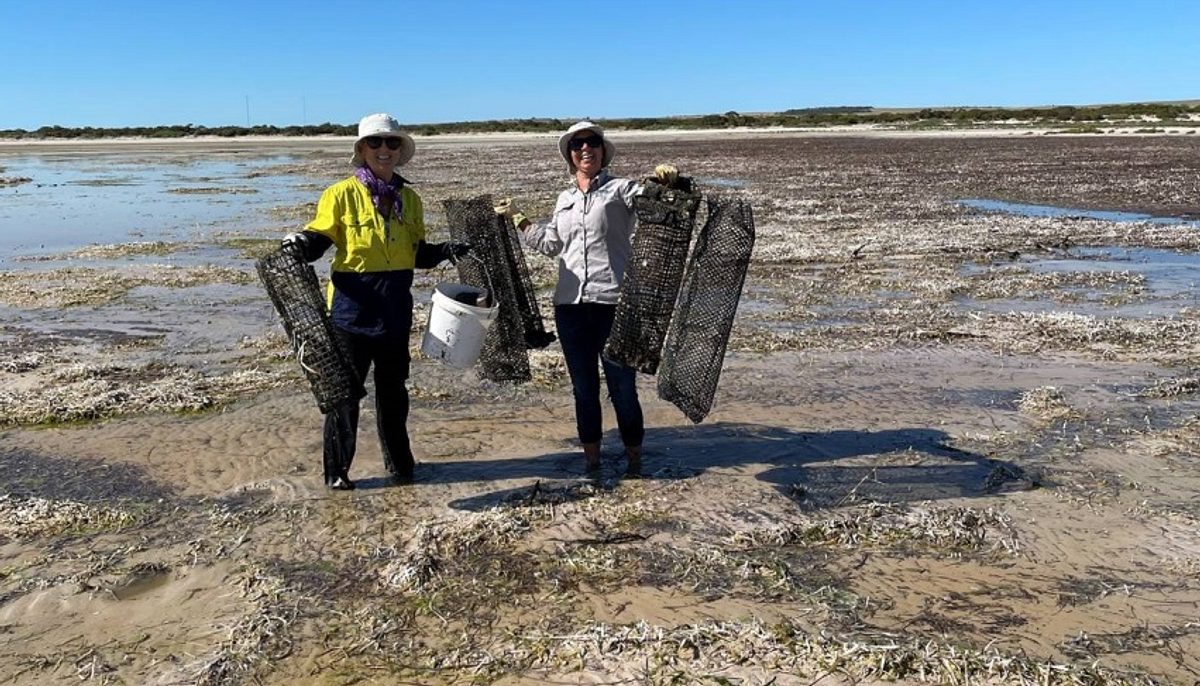
_________________________________________________________________
Rabbit control for saltmarsh remediation
January 17
Temperate coastal saltmarsh is a vital feeding, roosting and refuge habitat, as well as being one of the world’s most efficient ecosystems at sequestering carbon. More than 7,000 hectares of Eyre Peninsula’s threatened saltmarsh has been improved through on-ground works undertaken by our team.
Thanks to our STAR project, landscape officers have been working on priority actions to improve the condition of temperate coastal saltmarsh – an EPBC Act listed Threatened Ecological Community.
We’ve been working with landholders at priority saltmarsh sites where remediation works have been undertaken to improve saltmarsh condition. Around 2,000 hectares of targeted rabbit control has been undertaken at six saltmarsh sites across Eyre Peninsula. Each site is surveyed for evidence of rabbit presence and grazing impacts, with monitoring and follow-up control conducted over four years, to ensure the best opportunity for regrowth after ripping and establishing new plantings.
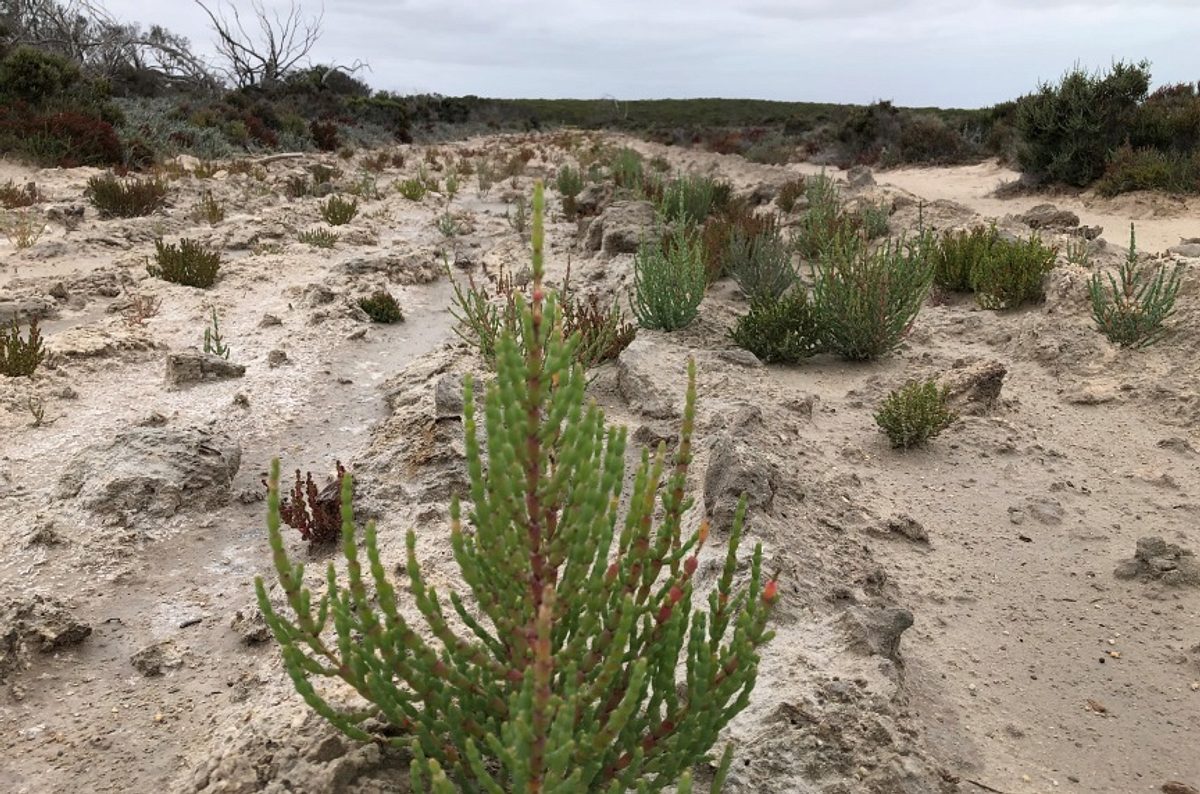
_________________________________________________________________
Removing marine debris to help shorebirds
January 12
Back before school finished up, we worked with Untamed Escapes and Kedron State High School from Queensland to remove marine debris from a threatened Hooded Plover nesting territory on southern Eyre Peninsula.
Beach nesting birds - including the threatened Hooded Plover - depend on healthy coastal habitats for their survival. Debris on our beaches can have severe consequences by causing disturbance, attracting predators and increasing the risk of entanglement. Marine debris was removed from more than 1km of remote coastline, with the group also excited to spot a pair of Hooded Plovers with a nest. Special care was taken to avoid the nesting area.
The debris collected was then sorted at a workshop with the help of the Lower Eyre Peninsula Home School group. A staggering 132kg of debris was removed, and included materials such as 66m of rope, 962 rope fragments and 247 pieces of broken glass.
Data will be entered into the national Tangaroa Blue Foundation database.
A great example of many hands making light work!
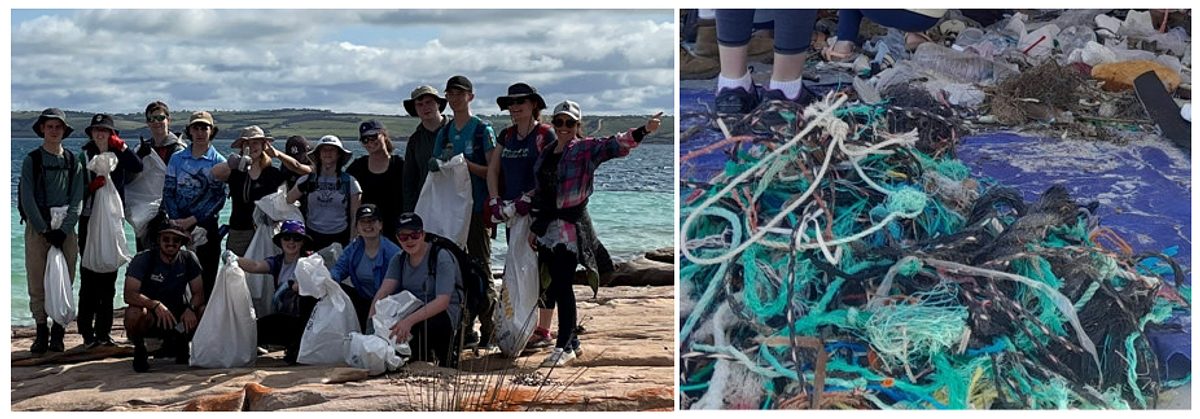
_________________________________________________________________
Video showcases EP saltmarsh
January 11
We’ve got a new video out that showcases Eyre Peninsula’s saltmarsh ecosystems; and the work we've been undertaking to help protect them as part of the STAR project for the past few years. Saltmarsh is vital to our local fishing industries & shorebirds such as the threatened Hooded Plover. It’s also a valuable blue carbon source.
_________________________________________________________________
Hally's hoodies fledged
January 9
Great news from one of our landscape officers today – the threatened Hooded Plover chicks at Hally’s Beach near Streaky Bay have made it to fledgling age! This means they can now fly which gives them an even better chance at survival.
If you visit Hally’s (or any other beaches with beach nesting birds), please keep your dog on a leash, walk close to the water’s edge and give them space if you happen to spot them.
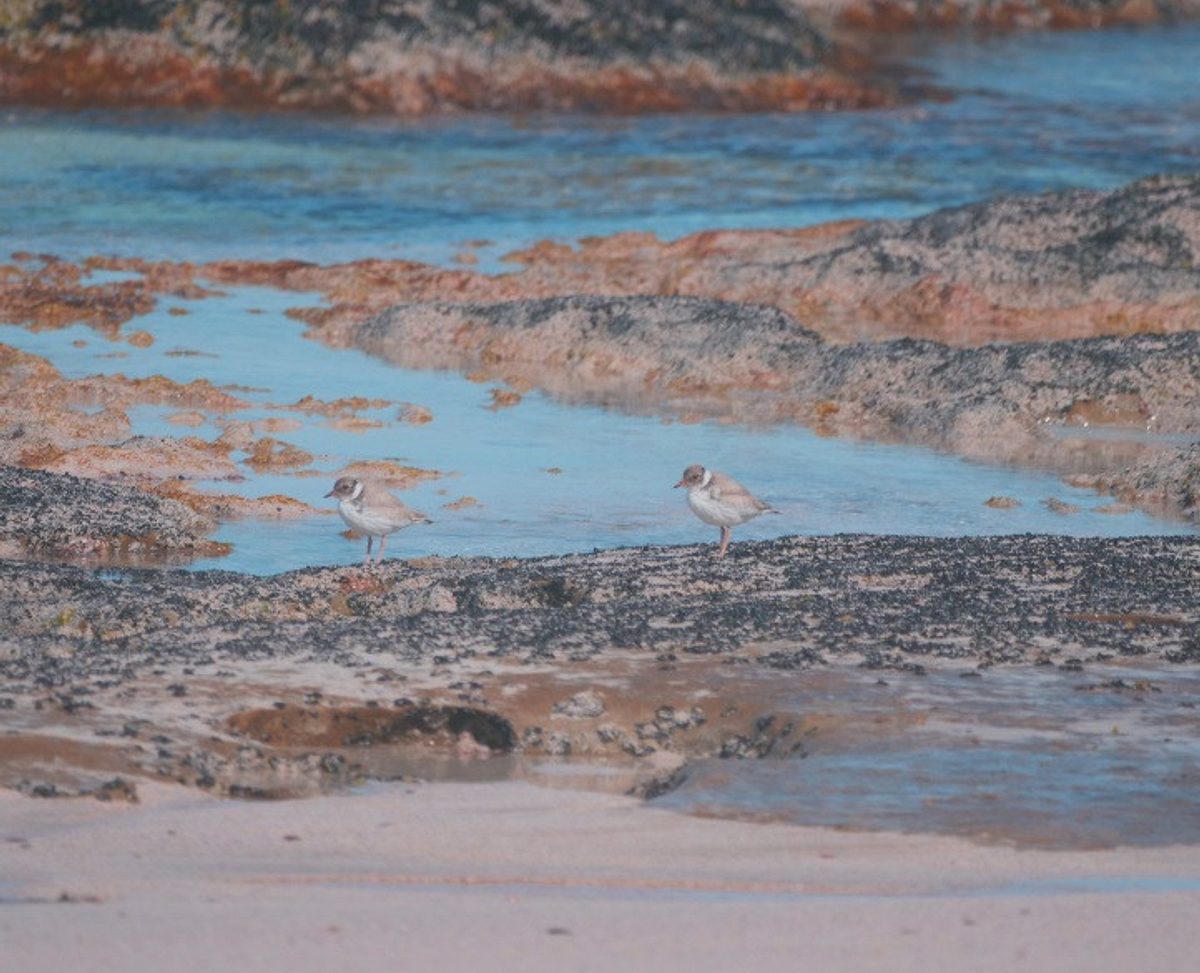
_________________________________________________________________
Fowlers Bay samphire
January 4
We’ve installed new samphire signage within Fowlers Bay Conservation Park to educate visitors about the importance of temperate saltmarsh filtering run off and providing foraging habitat for shorebirds.
The samphire - which is located behind the township - has some groundwater connection to the sea and contains the vulnerable species Tecticornia flabelliformis (fan samphire).
The signage also aims to limit threats from off road vehicles which has led to the degradation of this fragile samphire ecosystem. Saltmarshes of Southern Australia are now protected under the Environment Protection and Biodiversity Conservation Act 1999 to halt further loss.
We worked with National Parks and Wildlife Service SA on installing this.
